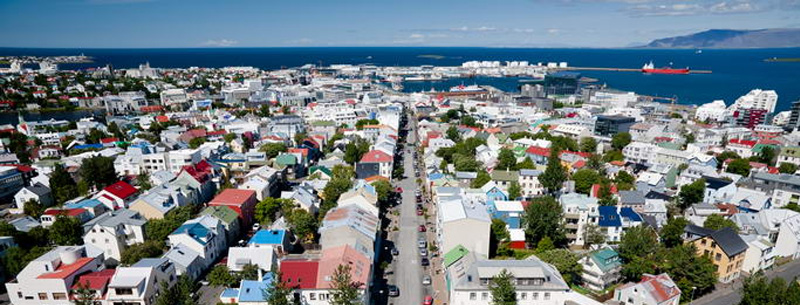2024 Iceland Visitor Guide
Resting on the edge of the Arctic Circle and sitting atop one of the world’s most volcanically active hotspots, Iceland is nowadays thought of for its striking mix of magisterial glaciers, bubbling hot springs, and rugged fjords, where activities such as hiking under the Midnight Sun are complemented by healthy doses of history and literature.
It’s unfortunate, then, that one of the country’s earliest visitors, the Viking Flóki Vilgerđarson, saw fit to choose a name for it that emphasized just one of these qualities, though perhaps he can be forgiven in part: having sailed here with hopes of starting a new life in this then uninhabited island, a long hard winter in around 870 AD killed off all his cattle. Hoping to spy out a more promising site for his farm he climbed a high mountain in the northwest of the country, only to be faced with a fjord full of drift ice. Bitterly disappointed, he named the place Ísland (literally “ice land”) and promptly sailed home for the positively balmy climes of Norway.
A few years later, however, Iceland was successfully settled and, despite the subsequent enthusiastic felling of trees for fuel and timber, visitors to the country today will see it in pretty much the same state as it was over a thousand years ago, with the coastal fringe, for example, dotted with sheep farms, a few score fishing villages and tiny hamlets – often no more than a collection of homesteads nestling around a wooden church. An Icelandic town, let alone a city, is still a rarity and until the twentieth century, the entire nation numbered no more than 60,000. The country remains the most sparsely populated in Europe, with a population of just 272,000 – over half of whom live down in the southwestern corner around the surprisingly cosmopolitan capital, Reykjavík. Akureyri, up on the north coast, is the only other decent-sized population center outside the Greater Reykjavík area.
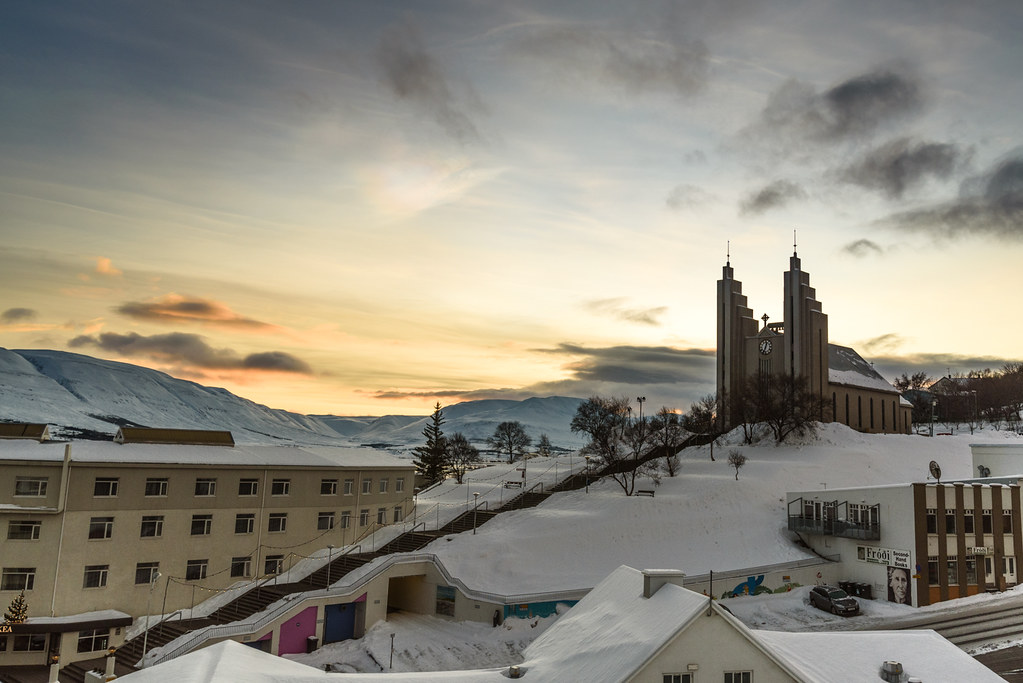
But if the coast is thinly populated, Iceland’s Interior remains totally uninhabited and unmarked by humanity: a starkly beautiful wilderness of ice fields, infertile lava and ash deserts, windswept upland plateaux, and the frigid vastness of Vatnajökull, Europe’s largest glacier. Even in downtown Reykjavík, crisp, snow-capped peaks and fjords hover in the background, evidence of the forces that created the country. Iceland’s location on the Mid-Atlantic ridge also gives it one of the most volcanically active landscapes on Earth, peppered with everything from naturally occurring hot springs, scaldingly hot bubbling mud pools, and noisy steam vents to a string of unpredictably violent volcanoes, which have regularly devastated huge parts of the country. It’s something that Icelanders have learned to live with in June 1998, when Reykjavík was rocked by a major earthquake, the ballet dancers at the National Opera performed right through it without missing a step.
Historically, the Icelanders have a mix of Nordic and Celtic blood, a heritage often held responsible for their characteristically laconic approach to life – taps in hotels often drip, buses don’t depart to the stroke of the diver’s watch, and everybody, including the President and the Prime Minister, is known by their first name. The battle for survival against the elements over the centuries has also made them a highly self-reliant nation, whose dependence on the sea and fishing for their economy is virtually total – hence their refusal to allow foreign trawlers to fish off Iceland during the diplomatically tense 1970s, sparking off three “Cod Wars”, principally with Britain. However, their isolated location in the North Atlantic also means that their island is frequently forgotten about – Icelanders will tell you that they’ve given up counting how many times they’ve been left off maps of Europe – something that deeply offends their strong sense of national pride. For all their self-confidence though, they can seem an initially reserved people – until Friday and Saturday nights roll around, when the bjór starts to flow, and turns even the most monosyllabic fisherman into a lucid talk show host, right down to reciting from memory entire chunks of medieval sagas about the early settlers.
Best Time to go to Iceland
Though milder than you might think, Icelandic weather is notoriously unpredictable. In summer there’s a fair chance of bright and sunny days and temperatures can reach 17°C but these are interspersed with wet and misty spells when the temperature can plummet to a chilly 10°C. Generally speaking, if it’s wet and windy in the southwest it’ll be sunny and warm in the northeast, which receives more than its fair share of sunshine in the summer months, much to the dismay of city slickers at the other end of the country. Most budget accommodation is only open from late May to early September, and it’s at these times, too, that buses run their fullest schedules. Many bus routes through the Interior don’t start until late June or early July when the snow finally melts. Although Iceland lies south of the Arctic Circle and therefore doesn’t experience a true Midnight Sun, nights are light from mid-May to early August across the country. In the north, the sun never fully sets during June. Between September and January, the Aurora Borealis or Northern Lights can often be seen. They appear as an eerie, oscillating curtain of green, blue, or pale orange light in the night sky.
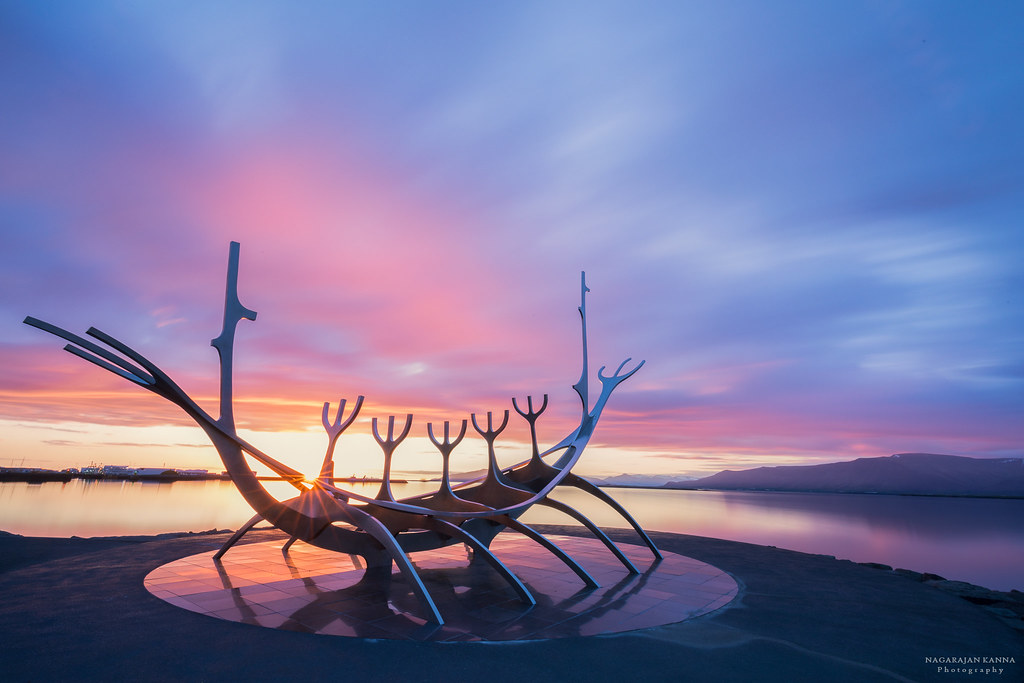
Winter temperatures fluctuate at 7-8°C either side of the freezing point and heavy snowfall and avalanches block many of the roads. There’s little chance of accommodation other than in the large hotels in Reykjavík and the other main towns, and hiking and camping are out of the question. However, a stay in the capital at this time means a lack of crowds and at Christmas, its streets are bathed in the glow of candles burning behind every window. Bear in mind though that daylight in midwinter is limited to a few hours – in Reykjavík, sunrise isn’t until almost 11 am in December; the sun is already sinking slowly back towards the horizon after 1pm; and by 3.30pm, it’ll be dark again. Further north in Ísafjörđur, reckon on around one and a half hours less daylight than in Reykjavík.
Best Places to Visit in Iceland
It’s difficult to imagine the emptiness of a country that is as large as England or the US State of Kentucky yet has a population of barely a quarter of a million (in comparison with England’s 48 million). Route 1, the Ringroad, runs out from Reykjavík to encircle the island, with all long-distance buses and domestic planes beginning their journeys from the city. It may be small, but what Reykjavík lacks in size it more than makes up for in stylish bars, restaurants, and shops, and the nightlife is every bit as wild as it’s cracked up to be – during the light summer nights, the city doesn’t sleep. The world’s most northerly capital also boasts cinemas, an opera, a symphony orchestra, and a dance company, as well as the usual string of museums and galleries. Reykjavík makes a good base for visiting the original geyser at Geysir, which gave its name to all other such hot springs around the world, and the spectacular waterfalls at Gullfoss. The Reykjanes Peninsula, home to the country’s only international airport at Keflavík and therefore the first sight most travelers get of Iceland, is renowned for its teeming birdlife and its whales, which are frequently spotted off the peninsula’s western tip.
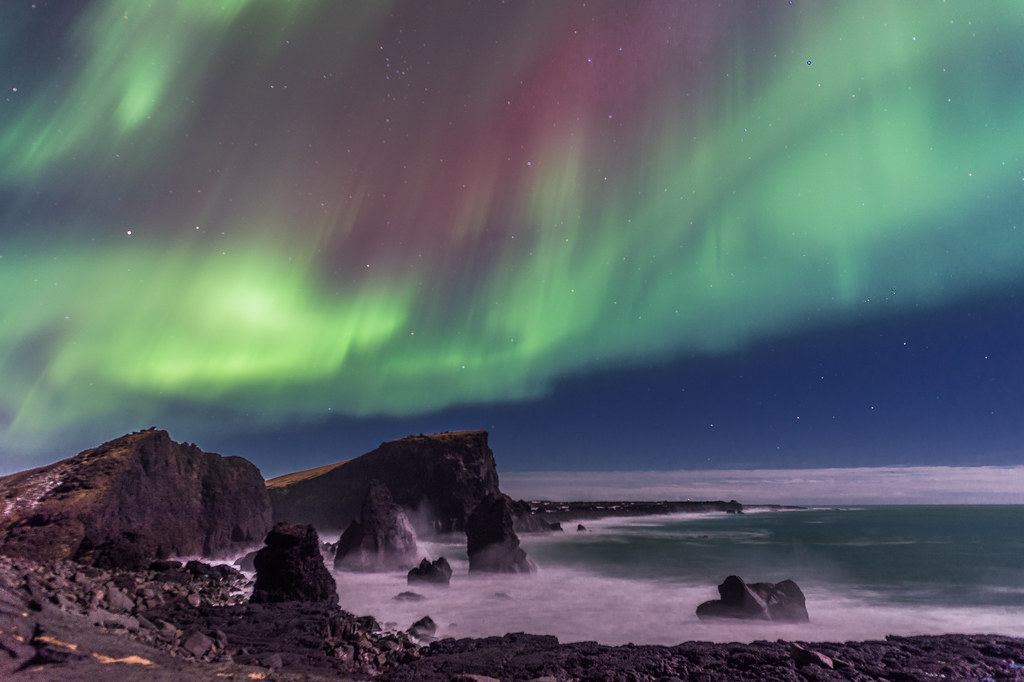
Outside the relatively densely populated southwestern corner, the wilder side of Iceland begins – open spaces of vivid green edged by unspoiled coastlines of red and black sands all set against a backdrop of brooding hills and mountains. The main draw of the West Coast is the towns of Borgarnes and Reykholt and the surrounding countryside, where there’s barely a feature that’s unassociated with the sagas, such as Keldur, a farm where dramatic scenes from Njal’s Saga were played out.
Away from the Ringroad, the Snæfellsnes Peninsula with its dramatic views of the glacier at its tip is one of the country’s most accessible hiking destinations. Arguably Iceland’s most dramatic scenery is found in the far northwest of the country, the West Fjords, where tiny fishing villages nestle at the foot of table-top mountains or are tucked away in the neck of narrow fjords that offer protection from the ferocious Arctic storms which batter this exposed part of the country. Ísafjörður is the only settlement of any size in the region and makes a good base from which to strike out on foot into the wilderness of the Hornstrandir Peninsula. Beautifully located at the head of Eyjafjörður on the north coast, Akureyri is rightfully known as the capital of the north and functions as Iceland’s second city. With a string of bars and restaurants, it can make a refreshing change from the small villages elsewhere on the north coast. From here it’s easy to make trips to reach the island of Grímsey, the only part of Icelandic territory actually within the Arctic Circle, and nearby Siglufjörður, for an insight into the twentieth-century herring boom that once made this tiny village the country’s economic powerhouse.
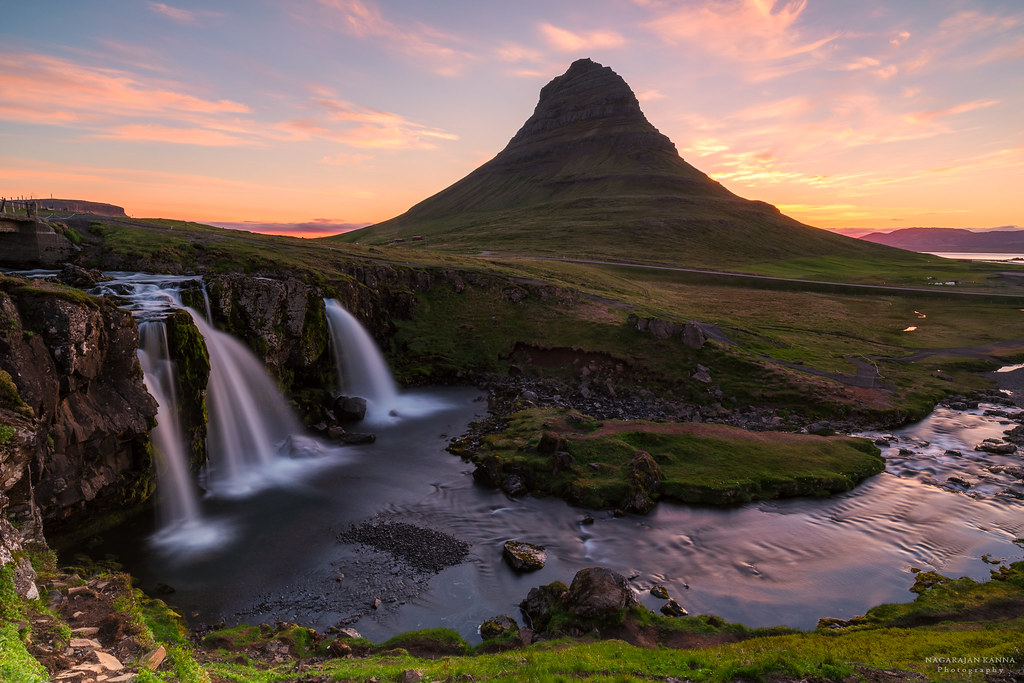
The country’s biggest tourist attraction outside the capital is Lake Mývatn, an hour to the east of Akureyri. The lake is a favorite nesting place for many species of ducks and other waterfowl and is surrounded by an electrifying proliferation of volcanic activity, including long-dormant cinder cones and the still-steaming lava fields at Krafla, which last burst forth in the 1980s. North of Mývatn, the small town of Húsavík is one of the best places in the country to organize summer whale-watching cruises, while just inland to the east, the wilds of Jökulsárgljúfur National Park offer superlative hiking along deep river gorges to the spectacular Dettifoss, Europe’s most powerful waterfall. Across on the east coast, the Eastfjords center on Egilsstaðir and the port of Seyðisfjörður, where Iceland’s only international ferry docks, and offer further walking opportunities – both coastal and around the fjords, and inland to the volcanic spire of Snæfell – in a part of the country which regularly receives the driest and warmest weather. The small town of Höfn in the southeast corner is a good base from which to visit Europe’s biggest glacier, the mighty Vatnajökull, either on a skidoo trip or on foot through Skaftafell National Park. Further to the west the nearby glacial lagoon, Jökulsárlón, offers the surreal chance to cruise alongside floating icebergs that were once part of the glacier itself. Iceland’s most rewarding long-distance hiking route is also found in this corner of the country – the Þórsmörk trail is one of the world’s most exhilarating walking paths.
The south coast is marked by vast stretches of black, volcanic coastal sands punctuated by tiny villages that unfortunately are prone to some of the country’s foulest weather – the town of Vík is Iceland’s wettest but boasts teeming seabird colonies. Just off the south coast, and easily reached by ferry from Þórlakshöfn, the Vestmannaeyjar (Westman Islands) sport the world’s largest puffin colonies and were propelled into the world headlines during the 1960s and 1970s by a series of volcanic eruptions that created a new island, Surtsey, and also threatened to bury the town of Heimaey under lava and ash.

Iceland’s barren Interior is best tackled as part of a guided tour – it’s much easier to let experienced drivers of all-terrain buses pick their way across lava fields and cross unbridged rivers than to try it yourself. Parts of the Interior’s fringes are also feasibly explored on foot, however, and even by bus it’s perfectly possible to break your journey anywhere and camp – you’ll be sharing the stunning scenery with only the ghosts of the early settlers who perished in its bleak, grey-sanded lava deserts.
Reykjavík
The world’s most northerly capital, Reykjavík has a sense of space and calm that comes as a breath of fresh air to travelers accustomed to the bustle of the traffic-clogged streets of Europe’s other major cities, and often literally so. Although unrepresentative of the majority of the country for its relative urbanization, a visit here is a good place to obtain as true a picture as possible of this highly individual, often apparently contradictory society, secluded on the very edge of the Arctic. While it’s true, for example, that Friday- and Saturday-night Reykjavík has earned the place a reputation for hedonistic revelry, with locals carousing for as long as the summer nights allow – despite the legendarily high price of alcohol here – the pace of life is in fact sedate. The tiny center, for example, is more of a place for ambling around, taking in suburban streets and corner side cafés set against mountain and ocean scenery, rather than being somewhere to hurtle around between department stores and designer clothes shops.

Similarly, given the city’s capital status, Reykjavík lacks the grand and imposing buildings found in the other Nordic capitals, possessing instead apparently ramshackle clusters of houses, either clad in garishly painted corrugated iron or drearily daubed in grey-brown pebbledash as protection against the ferocious North Atlantic storms. This rather unkempt feel, though, is as much part of the city’s charm as the blustery winds that greet you as you exit the airport, or the views across the sea to glaciers and the sheer mountains that form the backdrop to the streets. Even in the heart of this capital, nature is always in evidence – there can be few other cities in the world, for example, where greylag geese regularly overfly the busy center, sending bemused visitors, more accustomed to diminutive pigeons, scurrying for cover.
Today, amid the essentially residential city center, with its collection of homes painted in reds, yellows, blues, and greens, it is the Hallgrímskirkja, a gargantuan church made of white concrete towering over the surrounding houses, which is the most enduring image of Reykjavík. Below this, the elegant shops and stylish bars and restaurants that line the main commercial thoroughfare of Laugavegur, busy with shoppers seemingly undaunted by the inflated prices of goods – import taxes and cuts by middlemen are to blame – are a consumer’s heaven, even if window-shopping is all you can afford.
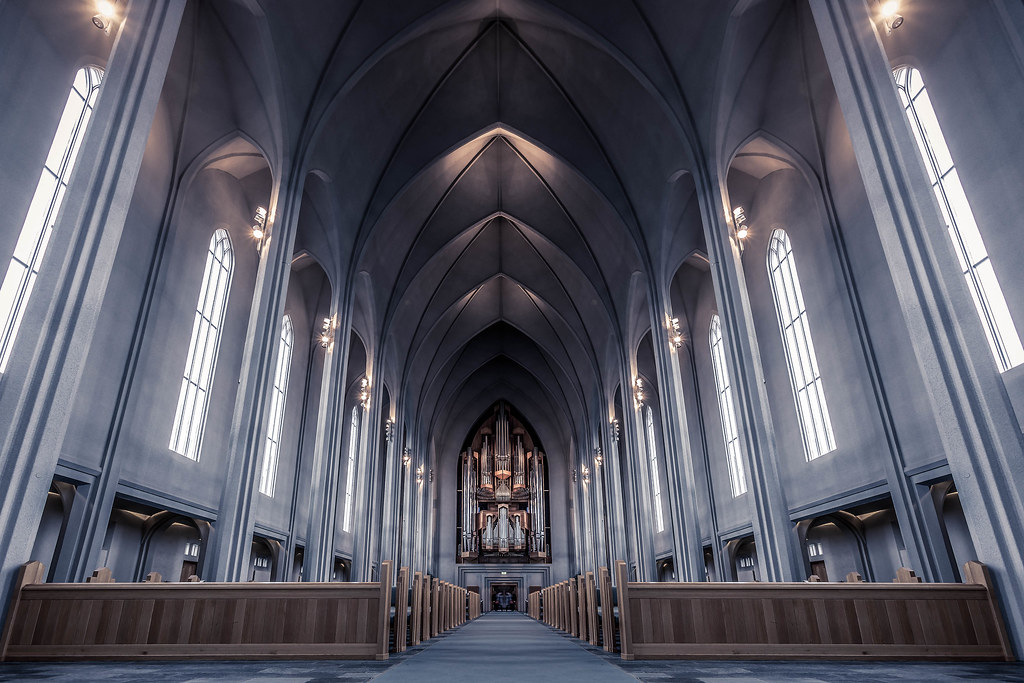
With time to spare, it’s worth venturing outside the city limits into Greater Reykjavík, for a taste of the Icelandic provinces – suburban style. Although predominantly an area of dormitory overspill for the capital, the town of Hafnarfjöođur, is large enough to be independent of Reykjavík and has a couple of museums and a busy harbor, though it’s for the summer Viking Festival that the town is perhaps best known. Alternatively, the flat and treeless island of Viđey, barely ten minutes offshore of Reykjavík, is the place to come for magnificent views of the city and of the surrounding mountains – there are also some enjoyable walking trails here, which lead around the island in an hour or so.
The city also makes a good base for excursions around Reykjavík, including to three of Iceland’s most popular attractions: the site of the old Alţing at Ţingvellir, the waterspouts, and waterfalls of Geysir and Gullfoss, and Skálholt church – all within simple reach by public transport – or, more expensively, on day-long guided tours from the city. Also worthwhile is the Reykjanes peninsula, a bleak lava field that’s as good an introduction as any to the stark scenery you’ll find further into Iceland, and home to the mineral-rich waters of the Blue Lagoon – the most visited attraction in the country.
Language
Notwithstanding the odd change in pronunciation, today’s Icelandic is essentially the same language the Vikings spoke over 1300 years ago. As a result, it is an oddly archaic language, heavy with declensions, genders, and cases, not to mention Norse peculiarities. Whereas the other principal members of the North Germanic group of languages, Danish, Norwegian, and Swedish lost much of their grammar over time, Icelandic has proudly maintained features that make even the most polyglottal language students cough and splutter.
It is also one of the most linguistically pure languages in Europe in terms of vocabulary, and a campaign to rid the language of foreign (mostly English) words has led to the coining of many new, purely Icelandic, words and phrases, devised by a committee of linguistic experts. Modern inventions especially have been given names from existing Icelandic words, such as sími for the telephone (literally “long thread”), and hence bréfasími (“letter telephone”) for “fax machine”; eggjakaka (“egg cake”) for “omelet”; and even fara á puttanu (“to travel on the thumb”), for “to hitchhike”. Although there’s no Icelandic word for “interesting” (the closest is gaman – “fun”), there’s a plethora of words to do with fish and the sea: pín porskur! (“You cod!”) is a term of abuse, whilst “to give up” is often rendered as leggja ára í bát, “to lay one’s oars in the boat”. If something isn’t up to much, it’s ekki upp á marga fiska – “not worth many fish”. Rural life has also left its mark on the language: on Friday nights in Reykjavík you’ll find plenty of people who’re sauđdrukkinnn – “as drunk as a sheep”; the word for sheep, fé, is also the generic term for money. Dogs also speak Icelandic and can quite clearly be heard to say voff (small children will refer to a dog as a voffi ) whilst cows on the other hand say mö .
Icelandic has also maintained many old names for European cities that were in use at the time of the Settlement, such as Dyflinni (Dublin), Jórvík (York, in Britain, hence Nya Jórvík for New York) and Lundúnir (London) in London).
Anyone learning Icelandic will also have to grapple with a mind-blowing use of grammatical cases for the most straightforward of activities: “to open a door”, for instance, requires the accusative case ( opna dyrnar ) whilst “to close a door” takes the dative case ( loka dyrunum ). Not only that but “door” is plural in Icelandic, as is the word for Christmas, jólin, hence jólin eru í December, literally “Christmasses are in December” (as opposed to the English “Christmas is in December”). Thankfully, there are no dialects anywhere in the country.
